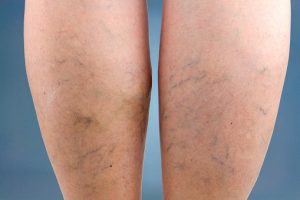 Circulation problems do not present symptoms right away. It may start really slow and inconspicuously. Perhaps you stand on your feet all day and all of a sudden start noticing a painful spot just behind your knee. Or, you’ve been sitting for long hours and you can feel your veins swell. Whatever the case, varicose veins point to a circulation problem and may bring you a lot of discomfort.
Circulation problems do not present symptoms right away. It may start really slow and inconspicuously. Perhaps you stand on your feet all day and all of a sudden start noticing a painful spot just behind your knee. Or, you’ve been sitting for long hours and you can feel your veins swell. Whatever the case, varicose veins point to a circulation problem and may bring you a lot of discomfort.
When we talk varicosis or look at advertisements for varicose vein treatment, the target audience is usually women. It’s true that women are more susceptible to developing vein problems than men. During pregnancy, the growing uterus puts pressure on the large vein, called the inferior vena cava, which puts more pressure on the leg veins. Hormone fluctuations associated with menopause and hormone therapy can also wreak havoc on your vein health. But while varicose veins are more common among women, this doesn’t mean that men are immune to circulation problems. (Miracle molecule helps double blood circulation.)
Advertisement
Vein problems are often triggered by lifestyle factors, applicable to both women and men. You may notice discomfort and painful sensations in your legs after spending a day standing in one spot or after a long drive or a flight. Leg injury can also cause some vein damage.
How do you know if your veins are in trouble?
Of course, the most obvious symptom of venous disease is swollen veins, but you may also experience leg pain, muscle cramps, and even restless leg syndrome (which is a strong urge to move your legs, especially when you sleep).
Do this one thing for your veins
Absolute prevention of vein problems is practically impossible. After all, even if you manage to take control of all modifiable factors—avoid standing or sitting for long periods of time, avoid long-distance travel—you can’t trick nature and gravitation. Some people are naturally predisposed to develop venous disease, and in some people, circulatory problems are simply due to gravity causing blood to pool in the legs.
But there’s one thing you should do if you want to improve your vein health: Get moving.
When you’re not moving, the blood is pooling in the extremities. Remember to get up from your seat from time to time for a short walk, do a few squats to get that blood flowing, or even do some stretches. That’s your short-term fix, something you should be doing every day from time to time.
But to ensure your veins are healthy in the long run, you’ll need to start exercising regularly. Exercise will improve your circulation and promote blood flow from your legs to the heart. (Restore your strength to get back to doing the things you love.)
Advertisement
Of course, there are clinical treatments available for both men and women to resolve their unsightly veins through a laser procedure or sclerotherapy. The recovery time is usually pretty short, and soon you’ll be able to resume your regular lifestyle. However, none of the treatments are 100 percent permanent, and bulging veins may return after some time.
Swollen veins can be bothersome, uncomfortable, and irritating. But even if you notice a spider vein or a varicose vein here and there, don’t get discouraged. Modern medicine can restore proper blood flow and improve the appearance of your veins, while regular physical activity will keep your legs toned and fit and ensure healthy circulation. And remember, no matter where you are and what you’re doing, if you feel like you’ve been standing or sitting for way too long, just get up and give your legs a shake.
Related: Prediction and prevention of blood clots may be easier with new method
